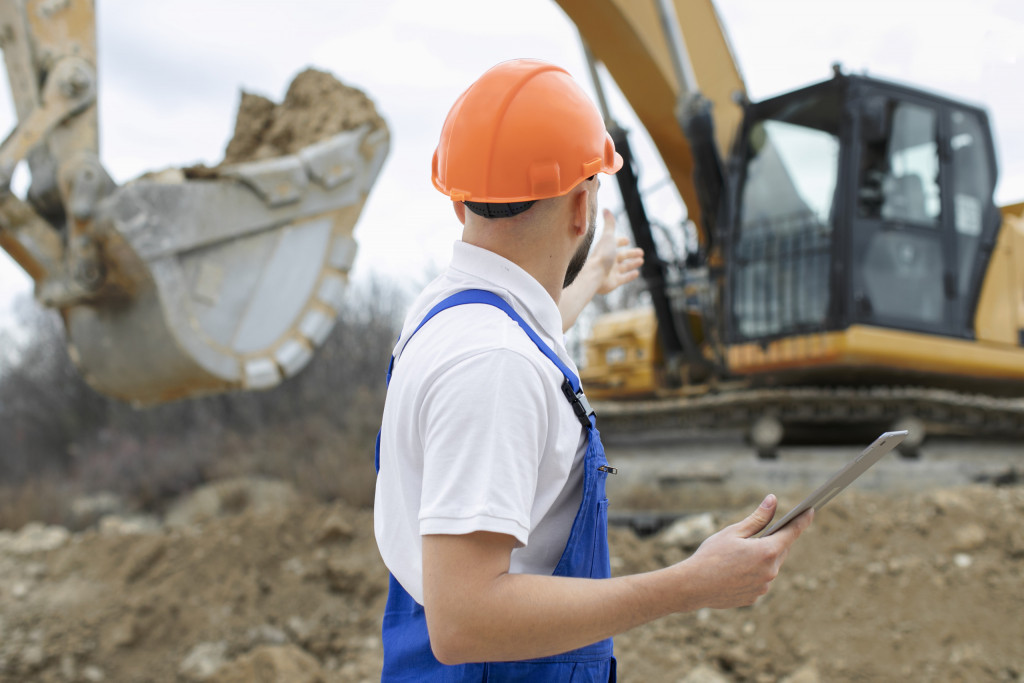Every weather type carries its own challenges and risks on construction sites. Just as there are essential tips on how to safely construct in the wintertime, we must take care when working in summer too. Summer weather events that can raise risks on construction sites not only include high temperatures but also heavy rains and storms, which are increasing due to climate change. Therefore, it is imperative that construction workers be familiar with summer safety rules. Even if you already know most of these, it is good to remind yourself and share this with colleagues to build a better working environment.
Effective heat management
The most obvious risk factor in summer construction work is heat. The human body cannot withstand too much strenuous work in high temperatures, so care is needed to minimize the risk of various heat-related conditions, such as heat cramps, heat stroke, heat exhaustion, and heat rash.
It is therefore advisable to drink at least one cup of cool water every 15 to 20 minutes. Furthermore, worksites should have adequate rest facilities for regular breaks out of direct sunlight, in the shade or within a structure. During the hottest times of the day between 1 and 3 p.m. (this may vary depending on region), avoid working outdoors as much as possible.
Being smart with precipitation
Summer means not just heat but also heavy rain in some areas. Climate change also increases the likelihood of torrential downpours, making proper response and countermeasures at construction sites indispensable.
Risk factors caused by heavy rain include potential flooding of construction sites, soil erosion, and electrical shocks. To avoid such things, the following safety measures should be put in place. Before expected rainfall, preliminary safety checks and measures should be carried out on facilities vulnerable to heavy precipitation and ground collapse on or near the worksite. Materials and equipment to be used in the event of a flood must be obtained and stored.
Steel frame work must be stopped when rainfall exceeds 1 mm per hour. If there is inclined ground that may give way due to rain, the operation of heavy vehicles or the stacking of materials must be stopped on the upper slopes. Where there is the possibility that a slope might collapse or there could be a landslide, a retaining wall must be built or worker access must be prohibited.
Rain and electricity are a dangerous combination, so when rain falls, all electrical machinery must be connected to an earth leakage breaker and grounded. A temporary power supply (such as a generator) must be set up in a safe place that cannot be flooded. To prevent electric shocks, workers must furthermore be instructed not to handle electrical items with wet hands and to check all equipment and machinery before resuming work after a workplace has been flooded.
Windy contingency
Summer is also the season of hurricanes, typhoons and cyclones: tropical storms known by different names in various regions. Each year these storms increase in frequency and intensity due to climate change so advance preparation for the unexpected path of one of these storms is necessary. One of the biggest risk factors due to a tropical storm’s strong winds is that heavy equipment such as a tower crane might tip over, or materials and tools might be blown away.
To avoid injuries, wind strength must be monitored and work restricted accordingly. For instance, when the instantaneous wind speed (gusts) exceeds 10 meters per second, stop steel frame work as well as installation, repair, inspection, or dismantling of tower cranes. When wind gusts top 14 m/s, stop tower crane operation altogether. Following passage of winds in excess of 30 m/s, check the worksite thoroughly for any issues before recommencing work. When wind gusts blow faster than 35 m/s, increase the number of supporting structures under aerial work platforms.
If strong winds are expected, inspect the bindings and reinforcements of scaffolding, safety signs and stacked materials. Safety nets should be installed in places where there is a risk of falling objects, and ventilation holes should be made in scaffold sheeting to prevent excessive pressure from building up due to wind.
Creating safe construction sites all year round
Samsung C&T Engineering & Construction (E&C) Group has education and checklists in place to prepare for heat waves and to minimize storm and flood damage or any other risk that arises in the summertime. For instance, the company strives to help its employees get as much respite from summer heat as possible by monitoring the health of workers and also by providing a rest area on site out of the sun. It also has a policy in place to respond to heavy rains that includes stopping work and vehicle operations when precipitation reaches 100 mm or more per hour at a given site. These are included in the company’s broader efforts to create a safe construction site 365 days a year.
For example, Samsung C&T E&C Group has granted stop-work authority to its workers in Korea and created an SMS system that delivers work-related safety information to workers in advance. In Singapore and Hong Kong, Samsung C&T E&C introduced Last Minute Risk Assessment (LMRA) programs similar to stop-work authority. In addition, the group communicates periodically with its workers about on-site safety through periodic interviews and runs experience-oriented safety education to create a culture in which workers directly maintain workplace safety.
Thanks to these efforts, Samsung C&T has repeatedly won safety-related awards in Singapore and Hong Kong. Furthermore, in 2020 Samsung C&T became the first Korean construction company to receive a Chief Information Officer (CIO) 100 Award organized by IT media and research organization International Data Group.
In addition, Samsung C&T significantly expanded its safety and public health departments and established a safety-focused research body. When applying relevant research through the introduction of robot and other technology to construction sites, Samsung C&T is working to lead construction industry safety culture.










